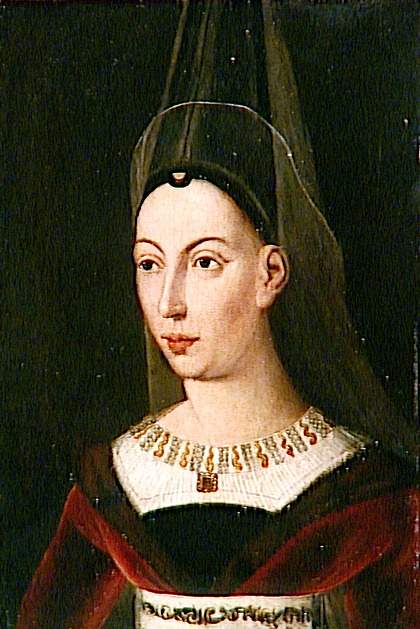London, 13 October 1453: Queen Margaret of Anjou, after seven years of barrenness, gives birth to a child. Much to the court’s disappointment, it’s a daughter. The beautiful and healthy baby is named Margaret after her mother and Saint Margaret. Unfortunately, Henry VI, the baby’s father, cannot celebrate. He is in a completely catatonic state. Richard, Duke of York, and regent of England, arranges for the baby to be christened in style.
Madonna and Child, depicting Margaret of Anjou and Margaret of Lancaster
London, 13 January 1454: As his daughter turns three months old, Henry VI succumbs to a high fever. He never broke out of his trance. Sensing trouble, Margaret flees with her infant daughter to Westminster Abbey, where she seeks sanctuary.
Henry VI, the last Lancastrian King of England
London, 15 January 1454: In absence of baby Margaret, Richard of is declared King Richard III of England. Edmund Beaufort, vocal in his anti-Yorkist sentiments, is thrown into the Tower of London.
Richard III, King of England
Pembroke, 17 July 1454: Richard III violently crushes a Lancastrian rebellion led by Owen Tudor. Owen and Edmund Tudor die in battle. Jasper Tudor is captured and thrown in the Tower of London upon return. On the same day, Edmund Beaufort, Duke of Somerset is executed for treason and his titles are forfeited to the crown. Margaret of Anjou senses the Lancastrian cause is over and agrees to meet with Cecily Neville.
Edmund Beaufort, Duke of Somerset, depicted here negotiating with a Welsh Priest
London, 1 August 1454: Just as Richard III returns, Margaret meets with Queen Cecily. The two women, both devoutly Catholic, attend Mass together, and then discuss the future. Margaret agrees to leave sanctuary and not pursue Lancastrian rebellions, but both her and her daughter will be treated well and given a comfortable position. Cecily promises Margaret this and even tells her that Margaret will almost certainly marry Edward, Duke of Cornwall, the son of Richard III and Cecily Neville.
Margaret of Anjou, Dowager Queen of England
London, 17 September 1454: Richard III and Queen Cecily are crowned in a small but festive ceremony at Westminster Abbey. On the same day, Edward of York is made Prince of Wales and officially betrothed to Margaret of Lancaster. The three younger sons receive the titles of Duke of Somerset (for Edmund), Duke of Clarence (for George) and Duke of Gloucester (for Richard). Little Margaret of Lancaster is made Countess of Lancaster, to give her and her mother an income. Richard also gives all his daughters the title Princess of England, to mirror foreign monarchs.
Richard III of England’s coronation
Windsor, 22 July 1455: Queen Cecily gives birth to a daughter who is christened after herself (Richard proclaims that the child is the spitting image of her mother). Meanwhile in Scotland (on June 28), Princess Margaret is born to James II and Mary of Guelders. She joins James (b.1451) and Mary (b.1453) in the royal nursery.
Mary of Guelders, Queen of Scotland







.jpg)
